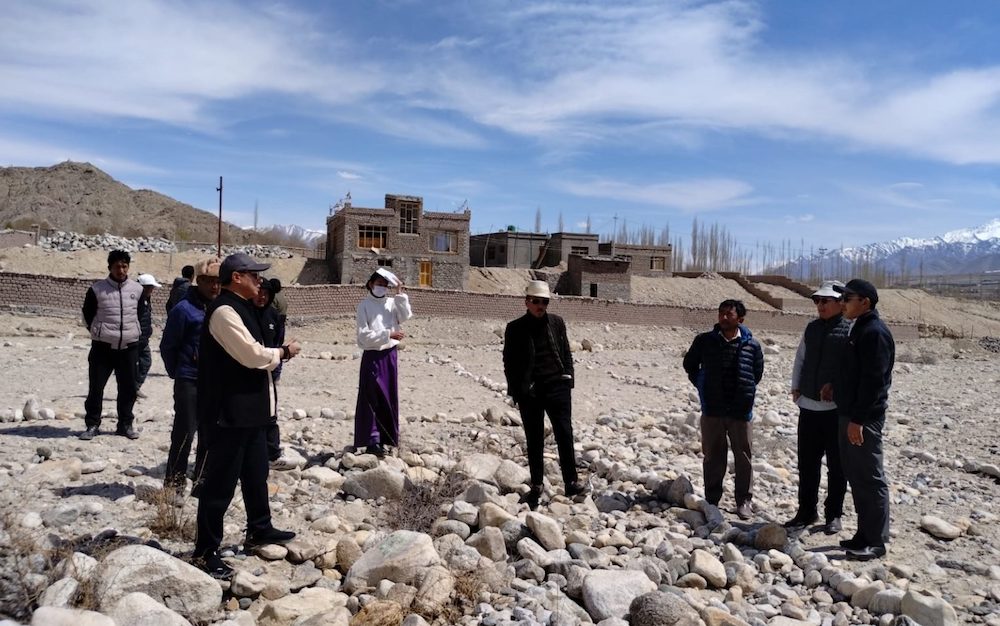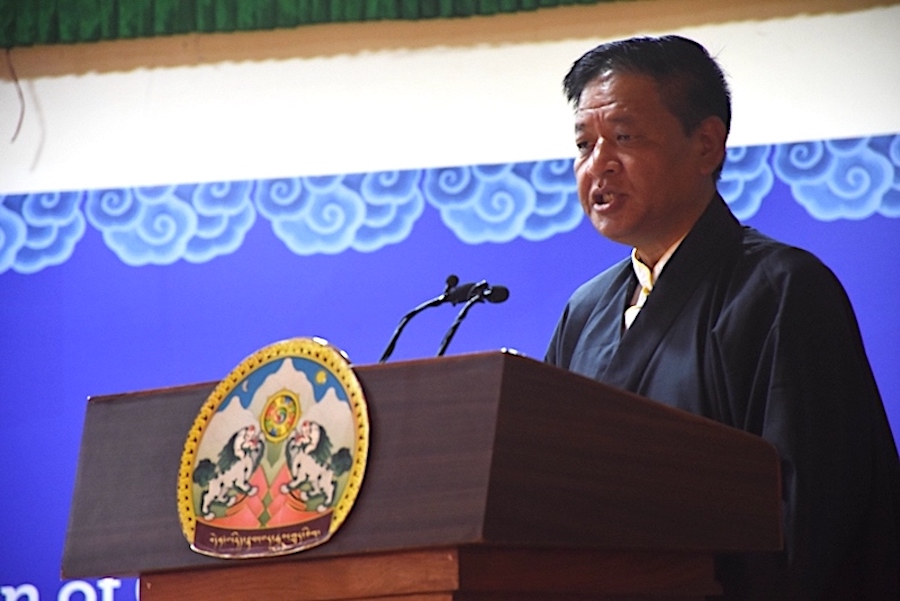More than violations of human rights and religious freedom, lack of economic opportunity fueled the riots in Tibet last week.
By Abrahm Lustgarten
Sunday, March 23, 2008;
On a winter night not long ago, I walked through the glowing doorway of Lhasa’s newest nightclub, Babila, for an interview with its owner, a Chinese entrepreneur. Disco balls spun from the ceiling. Fiber-optic strands of plastic beads drizzled down like rain to a long, sleek stainless steel bar. On the stage, dancers in stiletto heels and lingerie gyrated to thumping music.
“Tibetan culture is so deeply rooted here,” the owner told me. “I don’t think it will be diluted — it’s important for business.” Yet looking around, I saw no Tibetan employees, and Tibetans represented only a smattering of customers. The bar served mostly Chinese businessmen and army officers, whose tabs could run as high as $2,000, several times the per capita income in Tibet.
The nightclub owner’s comments underscored the very problem Tibetans have with Chinese rule. Their culture has been packaged for tourism. Business is booming. Yet they aren’t getting any of the bounty.
This, more than violations of human rights and religious freedom, is what fueled the riots in Lhasa and across Tibet last week — the largest and most violent protests since March 1989, when Tibetans last stood up to Chinese rule. Today, Tibetans stand at an economic threshold, about to be overwhelmed by the tsunami of China’s great expansion in ways that may ultimately be more devastating than the previous decades of repressive rule.
It is certainly true that human rights abuses continue in Tibet, including imprisonment and torture, the banishment of Tibetans from their farmland, and draconian restrictions on activities and thought within the monasteries. And it is these restrictions that may have sparked this latest resistance. But the mayhem in Lhasa was most notable for its focus on the symptoms of the economic shift. What began on March 13 as a protest by a few hundred monks from Lhasa’s monasteries turned into a riot that brought shopkeepers, traders and farmers into the streets.
The targets of destruction and violence were not random. The cars toppled and burning in front of the Jokhang temple, the 7th-century holy site at the heart of Lhasa’s old city, and on the nearby Beijing East Road were expensive Toyota Land Cruisers and slick Hondas and Audis. They represent the upper class of Tibet’s bureaucratic society and the ruling Han immigrants from China. The shops burning were Chinese-owned stalls and businesses, so many of which were built since Beijing renewed its push to bring intensive development and encourage Han migration to the Tibet Autonomous Region in the late 1990s.
Six years ago, on my first visit, Lhasa could still be described as a quaint city brimming with Chinese influence but largely characterized by its ancient Tibetan architecture, Tibetan goods and, of course, Tibetan people. The Chinese who did reside there often left in the winter, when temperatures drop below freezing and the 12,000-foot-high city is whipped with winds off the Himalayan plateau.
I was dumbfounded, on four subsequent visits, to see how much had changed. The population exploded — from 250,000 to 500,000 — and despite official figures that insisted otherwise, few of the newcomers were Tibetan. And they stayed in Lhasa year-round.
The Chinese had taken sledgehammers to large swaths of Lhasa’s historic streets — narrow cobblestone alleys pinned in by 400-year-old whitewashed buildings. They replaced entire neighborhoods with hastily built office buildings and dreary shops with all the hospitality of self-storage units. A $10 million shopping complex, its five stories bedecked in glass and billboards of scantily clad underwear models, opened blocks from the Jokhang. (It was torched in the protests.) Chinese dominated all sectors of the economy; they sold all the fruit, drove most of the taxis and mined all the minerals. And finally, in July 2006, the acclaimed Qinghai-Tibet railway opened for service, a transformational breach that released the floodgates.
In the accepted Western narrative on Tibet, economic development itself is villainized, the suggestion being that Tibet should remain as it was a thousand years ago because it represents something so peaceful and idyllic. Poor, yes, but how picturesque. It feeds the simplistic cliche of Buddha-loving pacifists oppressed by the atheist Chinese. The assumption is that Tibetans feel this way, too.
But in interviews with natives, I heard a different thread: Many had been eager for modernization and had anticipated its perks — higher living standards, more education and better jobs. At first, they had welcomed the promised price drops and opportunity the railway was supposed to bring. But as the perks failed to materialize, they lost faith in a system that seemed blatantly designed to leave them out.
On a cold winter night in the capital, a young Tibetan entrepreneur gave me his perspective. “This is the universal trend,” he said, gesturing to the thriving rows of lit storefronts and bustling commerce around us. “It would be happening whether China was doing it, or Tibetans were doing it.”
This man was trilingual, educated at one of Beijing’s best universities. But he was having trouble making it in the new economy, and he was not alone. Another Tibetan man complained that he’d lost his guiding license after police began to enforce rules requiring annual exams — in Mandarin. Another reported that police forced him to rename his business after a Chinese investor chose the same name for his own shop. Meanwhile, signs for Tibetan businesses had universally been translated into Chinese, with small, scarcely visible Tibetan subscript as an afterthought. Tibetan identity was being chiseled away, replaced by the pell-mell flow of new businesses, new initiatives and new laws to support them.
In October 2006, several hundred young educated and otherwise “modern” Tibetans gathered in front of the local government administrative offices in Lhasa in what may come to be viewed as the precursor to the widespread unrest last week. The protesters didn’t take aim at religious persecution or human rights complaints but at the unfair rules of their new economic world. They were upset that, despite their own education and middle-class standing, jobs were going to Han Chinese instead.
The Chinese portray all that has happened in Tibet as progress, attributing the whopping 12 percent to 15 percent growth in gross domestic product in recent years to an almost philanthropic commitment to Tibetan culture. But their policies seem to have been aimed at something quite different.
China has consistently pursued a policy of “taming” its far-flung western regions through economic and ethnic assimilation. It has crafted tax incentives to encourage Han business owners to move west from eastern cities and has loosened migration rules. “Go West, Young Han” is the clarion call of the times. Chinese state-run firms have staffed large construction projects such as the railway and even local road building with Han Chinese contractors and crews, who send their earnings home.
All the expansion and wealth that has streamed into Tibet has benefited Tibetans very little. Even after decades of investment, the illiteracy rate remains four times that of neighboring Sichuan province, and vocational schools per capita are one-fourth as prevalent as in the rest of China.
The Beijing Olympics in August afford Tibetans — and many other downtrodden Chinese — what may be their last great opportunity to draw the world’s attention to the inequity of China’s economic miracle. For the Tibetans, it may be their final chance to hold onto an ethnically, religiously and economically unique homeland before it is lost forever. This is what makes the uprising of 2008 different from that of 1989, and this is what is bringing Tibetans into the streets.
Back at that nightclub in Lhasa, I asked the young owner whether he thought the rising inequality was worrisome. His sanguine response nodded to the Chinese policy of seeking stability in Tibet by flooding it with Chinese: “It is very Han-friendly,” he said. “There are many Sichuanese people now, [so] I feel more comfortable.”
feedback@abrahm.com
Abrahm Lustgarten is the author of the upcoming “China’s Great Train: Beijing’s Drive West and the Campaign to Remake Tibet.”









